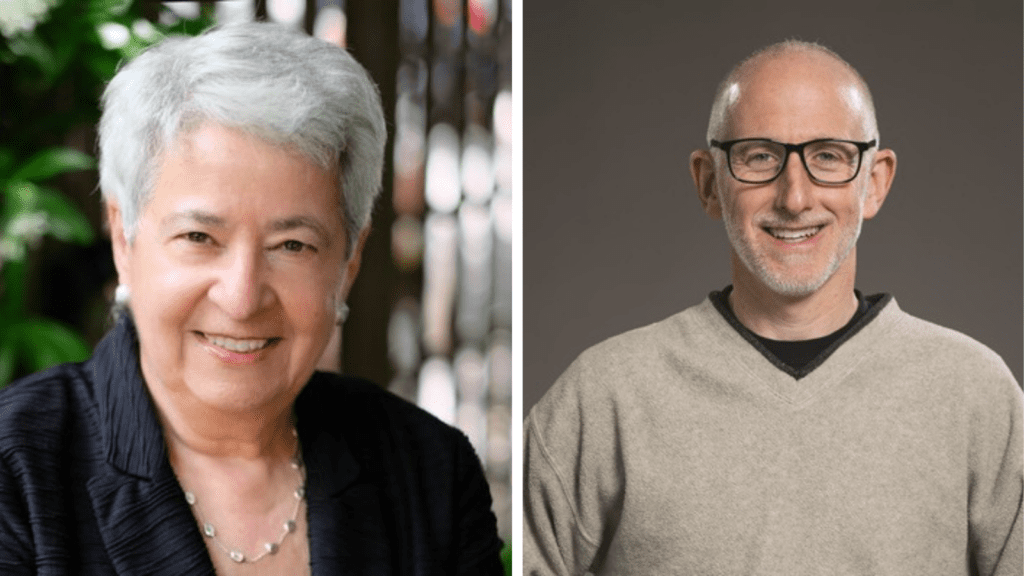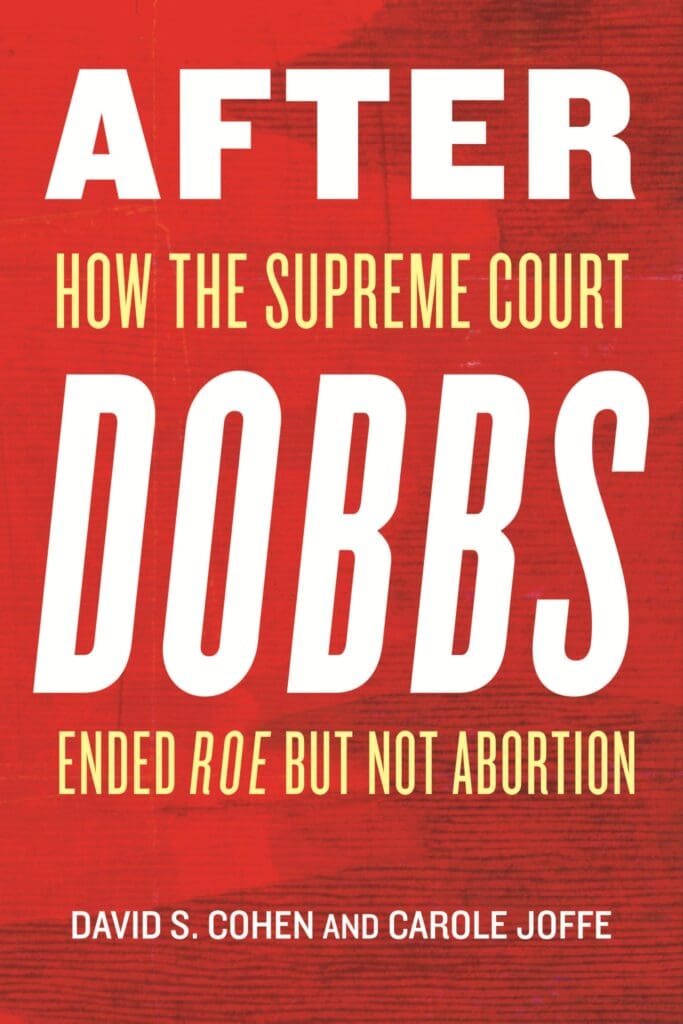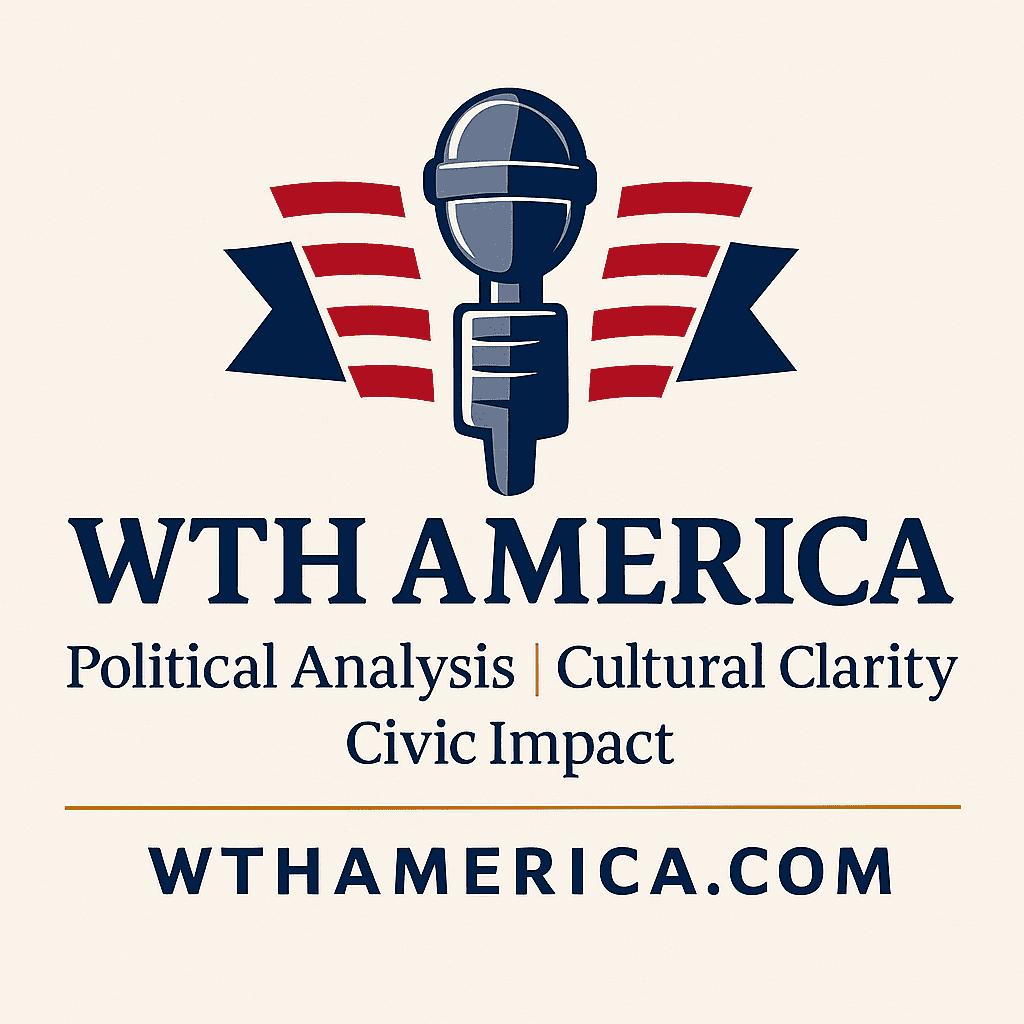
New Report on the National Security Risks from Weakened AI Safety Frameworks
April 24, 2025
Yom HaShoah: Remembering the Holocaust and confronting hate
April 24, 2025Despite the fall of Roe v. Wade, abortion providers, legal advocates and grassroots organizers have forged new paths to ensure access—often in the face of extraordinary odds.
Three years ago, the U.S. Supreme Court overturned Roe v. Wade and denied women the right to abortion that had existed for nearly half a century. Fourteen states have since banned the procedure completely, with almost no exceptions. Four more have passed time limitations so onerous that the services are effectively unavailable.
And yet abortions continue to take place across the country, in numbers equal to or greater than before. How has this been possible?
In their new book, After Dobbs: How the Supreme Court Ended Roe but Not Abortion, sociologist Carole Joffe and legal scholar David S. Cohen uncover and analyze the courageous and innovative work of medical providers, politicians, lawyers, advocates and private donors, working tirelessly on the ground to secure continued access.
Ms. contributor Ellen Chesler recently caught up with Joffe and Cohen.

This interview has been lightly edited for length and clarity.
Ellen Chesler: Carole, with five previous books and many articles under your belt, you have long been the leading “scribe” of family planning and abortion provision in America. What is the big reveal in this new study? What surprises you most?
Carole Joffe: Having studied abortion provision in the United States for over 40 years, I was not surprised to hear, from the providers we interviewed, of the extraordinary efforts they were making to assure that those impacted by Dobbs would still receive abortions.
I should stipulate that in the category of “abortion providers,” we include clinic administrators and staff—not only those clinicians who perform abortions. To be clear, it is both who do the very creative work we describe—for example, moving a clinic across state lines, devising new ways to get abortion pills to those in states with abortion bans, and dramatically expanding hours of operation in the “surge states,” where abortion remains legal and available, in order to accommodate the flood of out-of-town patients.
Before Dobbs, one out of 10 patients traveled out of state for an abortion; since Dobbs, the figure has doubled to one out of five.
What did surprise me was learning of the extremely important role of “patient navigators,” located both in national organizations like the National Abortion Federation and Planned Parenthood, and in local abortion clinics and funds. These navigators are instrumental in helping those that need to travel for abortions: helping with clinic appointments, assisting with payment for the abortion itself and arranging for travel and lodging. The stories we heard about the work of navigators reveal their incredible nimbleness.
For example, a doctor in the Midwest told us of a patient who had been scheduled to arrive at her clinic that day but whose flight was cancelled because of a snowstorm. Within hours, a navigator was able to reschedule her at another clinic and arrange a flight and a hotel.
The joint efforts of providers and movement allies, which we describe at length in our book, likely account for the unexpected finding that the number of abortions in America actually rose in the two years immediately after Dobbs, rather than fell, as many expected.
But we end our book on a note of caution, warning that the sustainability of the efforts we document cannot be taken for granted. Even if the Trump administration does not clamp down on abortion provision, continued robust donations by the public, clinic escorting, other local supports for patients, and of course, continued voting for pro-choice candidates are all essential in keeping abortion accessible.
Almost everything we describe in our book tells the story of resistance and resilience in the face of injustice.
Carole Joffe
Chesler: David, you are a leading legal scholar in the reproductive rights field, and an architect of the so-called “shield laws” that are protecting medical providers in states when they prescribe and administer abortion pills over the internet or by phone. Please explain how all this works and why it is so important. Perhaps you can also mention the role legal referendums have played in some states that overturned abortion prohibitions.
David S. Cohen: Ever since Dobbs, states have been fighting back, and this has been a big part of the story we tell of why abortion numbers have gone up despite Roe having been overturned. One thing pro-choice states have done is pass what are called “shield laws.”
A state that passes a shield law protects abortion providers within its jurisdiction by making explicit that it will not cooperate with officials from states where abortion is prohibited who attempt to prosecute or sue abortion providers or supporters helping to provide services to out-of-state residents who travel and cross state lines for services.
If Texas, for example, tries to sue or prosecute individuals in New York caring for a Texas patient, New York courts, police departments, executive officials and licensing boards will not cooperate. Eighteen states and the District of Columbia now have shield laws protecting people who care for traveling patients.
But eight of these states have gone even further by explicitly protecting providers who, via telemedicine, care for patients across state lines. Thus, a New York doctor who mails pills to a patient in Texas is protected from prosecution by the New York shield law.
We interview one such doctor in our book, and she explains the importance of expanding care options for people in states with bans. Telemedicine providers have been prescribing and sending interstate roughly 10,000 packets of pills per month, vastly increasing abortion access nationwide. This kind of innovative legal protection for telehealth abortion is a direct result of advocacy in the wake of Roe having been overturned.
Another key development post-Dobbs has been state ballot initiatives that protect the right to abortion. This has happened in usual-suspect “blue” states, such as Vermont, California, New York and Maryland. But, critically referendums to codify abortion rights in state constitutions have also been passed in “red” or “purple” states such as Ohio, Missouri and Arizona. Ballot initiatives have passed in 14 of the 17 direct elections about abortion since Dobbs, demonstrating that there is a strong pro-choice majority in almost all states, even the most conservative ones.

Chesler: Carole, you observe in the book that patients have been encouraged to tell their abortion stories, but providers are understandably reluctant to do so. Yet, in this crisis, many have stepped up publicly. Can you put a human face on one or two of the providers you interviewed?
Joffe: After Dobbs, we interviewed in both states where abortion is legal, and states where it is banned. In the latter, we heard poignant stories of people who were forced abruptly to give up the work they had been doing, often for many years.
Dr. Leah Torres, a fellowship-trained obstetrician-gynecologist, who had been providing abortions at one of the three abortion clinics that existed in Alabama pre-Dobbs is one such individual. For Leah, the Dobbs decision was both personally and professionally devastating. In our book, she recalls her reaction when she first heard of the decision: “In a wave, it hit me: You are not a citizen, equal under the law. And my profession became a criminal act.”
She goes on to describe the anguish she felt about having to refuse abortion care to the largely impoverished community her clinic served.
Julie Burkhart has spent most of her adult life establishing and managing abortion clinics. She got her start in this field by working for Dr. George Tiller, the legendary abortion doctor who so tragically was assassinated in his very own church by an antiabortion fanatic in 2009.
About a year before Dobbs, Julie was contacted by a group of activists in Casper, Wyo., who urged her to open a clinic there. Though technically legal in Wyoming, there were minimal abortion services available in the state. So, against many odds—not the least of which was the unending hostility of the Wyoming legislature and governor— Julie in 2023 managed to open a clinic in this very red state, after enduring numerous court battles, and also a firebombing, which delayed the clinic’s opening for almost a year.
At the time of this writing, however, the clinic is no longer providing services, as Julie awaits the outcome of yet another legal battle, this time over the state’s imposition of regulations that could bankrupt the clinic. One inspiring development to note, nonetheless: As a possible sign of the growing destigmatization of abortion providers since Dobbs, Julie was recently named one of Time magazine’s 2025 “100 most influential people in the world.”
Editor’s note: In a victory for reproductive rights, people will once again be able to get abortions in central Wyoming after a judge on Monday suspended two state laws—one would have required clinics providing abortions to be licensed as outpatient surgical centers, while the other required patients to get an ultrasound before taking abortion pills.
“We are immediately shouting it from the rooftop to make sure our patients know,” Burkhart said. “We are back to seeing patients the way we were on Feb. 27.”
What keeps me up at night and is the number one threat to abortion right now is the Comstock Act. … This would be a de facto national abortion ban, as everything abortion clinics and providers use travels through the mail in some fashion.
David Cohen
Chesler: David, in its early months the Trump administration has taken aim at federal employees, its many perceived political enemies and, of course, at both legal and illegal immigrants residing in the U.S., with a ferocity that used to be reserved for abortion providers and advocates. It’s likely just a matter of time until abortion returns to center stage. What worries you most when that happens? What’s up next?
Cohen: Everything we describe in our book that has resulted in abortion access increasing post-Dobbs is threatened by the Trump administration. If the federal government were to take steps to ban or restrict abortion, it may not matter that many states want abortion legal and accessible, despite what the president has said in the past about his intent to return abortion jurisdiction to the states.
What keeps me up at night and is the number one threat to abortion right now is the Comstock Act—this federal law, passed by prudish Victorians way back in 1872. Comstock in its day also prohibited contraception. That dimension of the law has been nullified by Congress, but the use of interstate mail to send any abortifacients (as well as anything considered indecent or immoral) still remains on the books—despite a half century of precedent with legal abortion, and despite a clear understanding at the time Comstock laws were passed that they were never meant to apply to the treatment of patients by certified medical professionals.
Nevertheless, the antiabortion movement is pressuring President Trump’s Justice Department to make use of the Comstock Act to ban the mailing of abortion pills and any other materials used in procedural abortion in any setting. If enforced this way (and upheld by the courts), this would be a de facto national abortion ban, as everything abortion clinics and providers use travels through the mail in some fashion.
Beyond the Comstock Act, the federal government could further restrict abortion pills. The FDA approved mifepristone for abortion in 2000, and in 2021, the agency allowed pills to be delivered by mail (they previously could only be obtained in person from a certified provider). Mailing pills has allowed for an increase in use, as people choose to get abortions via telehealth for a variety of reasons. The Trump FDA could reinstate the in-person requirement or even try to rescind the original approval. The antiabortion movement is urging the administration to take both of these actions.
Thankfully, so far, the Trump administration has shown almost no inclination to pull these levers. But we certainly cannot predict the future, so we have to be ever on guard against these efforts.
Chesler: Carole and David, the outlook David just described certainly looks bleak. Can you leave our readers with something to feel good about? What, if anything, gives you hope? What should we be doing now?
Joffe: Almost everything we describe in our book tells the story of resistance and resilience in the face of injustice. The people we profile show us how to fight back against oppression—and how to do so effectively.
Cohen: We hope they provide our readers with hope and with a roadmap for how to craft a future that guarantees the liberties and freedoms most Americans want, and to reject politicians and judges who are trying to set us back decades.
Great Job Ellen Chesler & the Team @ Ms. Magazine Source link for sharing this story.







